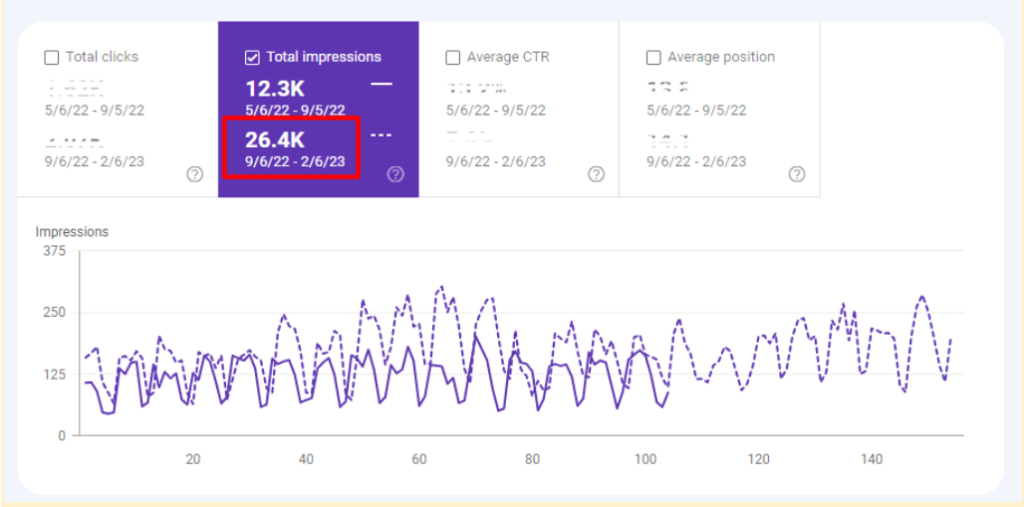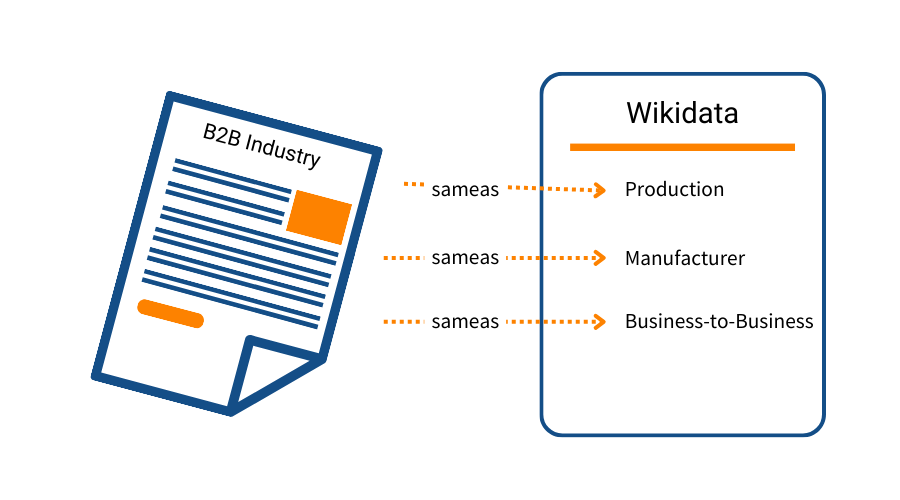Updated November 2, 2023
Reading Time: 3 minutes
Executive Summary
Imagine wielding the SEO superpower of schema, an advanced optimization technique that unlocks the hidden potential of entities – the meanings, contexts, and knowledge wrapped around specific topics. We harnessed this digital magic — providing search engines context and content meaning — to boost visibility in organic search.
Using data pulled from Google Analytics and Google Search Console, we chronicled the improvements achieved by one of our B2B clients. In a five-month comparison of their top pages before and after adding schema markup, we measured improvements in impressions, organic search position, and click-through rates.
What We Did
Attributing WikiData Pages
One of the most valuable functions of schema markup is attributing your pages to high-authority sources like Wikipedia and Wikidata without risking stuffing content. For this, we used the “SameAs” property.
Using schema, we marked each service page to point to the appropriate Wikidata page.

Associating Relevant Pages with Each Other
Using schema properties like “Subject Of” and “Main Entity Of”, we were able to associate the content on the client’s site. This was especially helpful for subpages nestled under a bigger topic and connecting articles to contribute to the context of the main page. This also gives the search engine a network of pages to crawl.
Marking Up FAQs
FAQs are a great way to highlight important topics that can enhance visitor experience. When we markup these ‘question and answer’ sections, search engines can show relevant information right in the search results. Keep in mind that Google and other search engines might change how they use this information over time. However, using FAQs in your content helps readers quickly find the information they need, no matter where they are in their buying journey.
Our Schema Results
After implementing schema SEO, the initial results for our client’s website were significant. Here are the key statistics:
- Impressions increased by 89%, from 12,000 to 26,400. This means the website is 89% more visible to searchers, creating more opportunities to increase relevant traffic.
- Page ranking improved from page 4 to page 3. This indicates that the website is now positioned higher in search results, making it more likely to be seen by users.
- The highest click-through rate reached 4.5%, a 59% increase compared to before schema implementation. This suggests that the information displayed in search results is more compelling and enticing to users, increasing the likelihood that they will click through to the website.
Other Success Stories with Schema
We aren’t the only ones seeing results from schema SEO. Here are a few companies who vouch for schema’s effectiveness.
- SAP Answer Center – 400%+ growth in clicks from rich results
- Advent Health – 40% increase in impressions
- Home Hardware – 290% increase in impressions from Product Rich Results (meaning their products were featured on top of SERP)
If you’re interested in reading their full story, check out our page on schema marketing.
Conclusion
Overall, we see positive results in leveraging schema for our client’s websites. We are also testing other ways to boost its effectiveness further and working closely with our schema tool provider to minimize errors and abide by Google’s guidelines. Learn more about how to use schema to optimize your site for organic search by scheduling a meeting with us.

 WordPress 6.3 Improves Page Speed & New Features
WordPress 6.3 Improves Page Speed & New Features